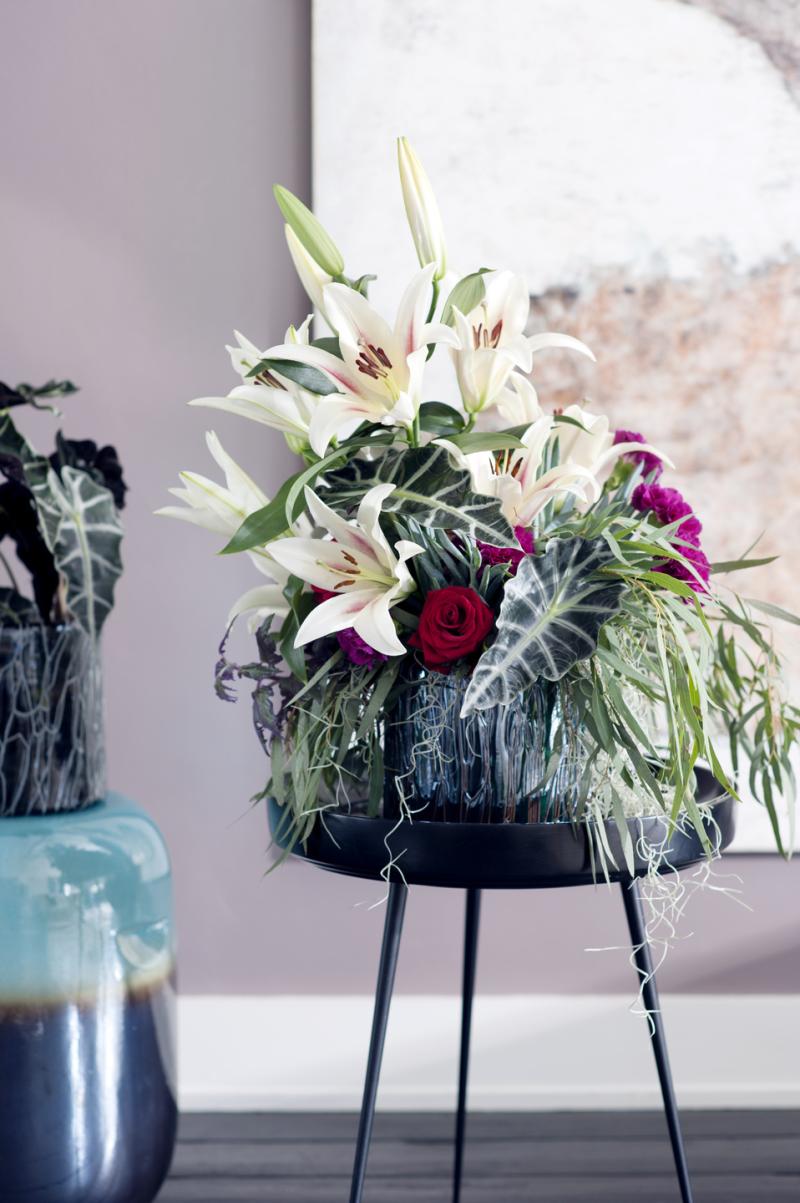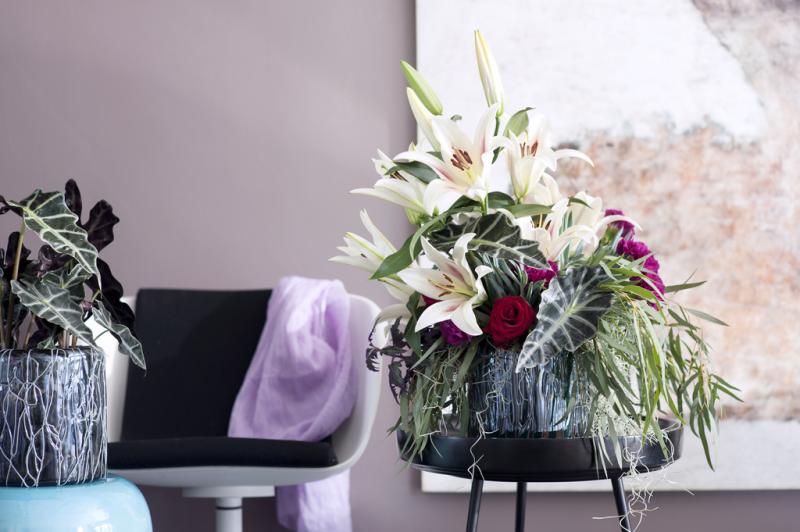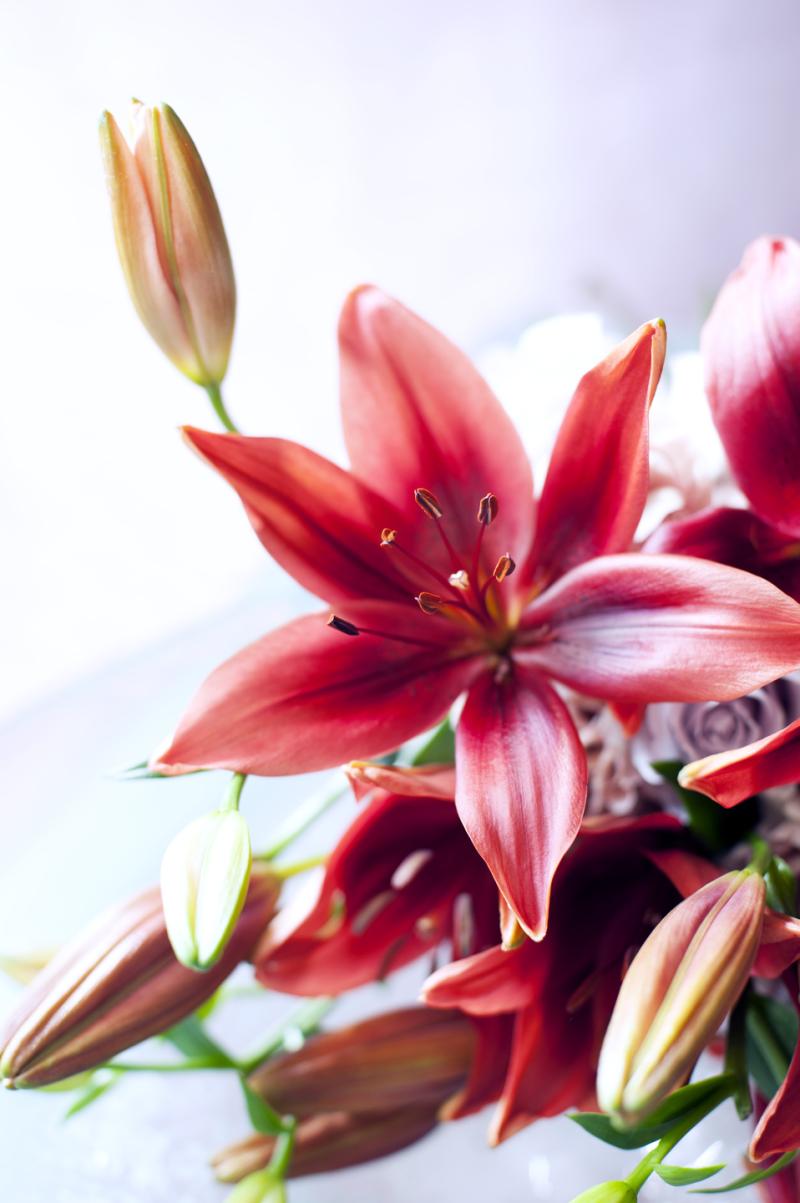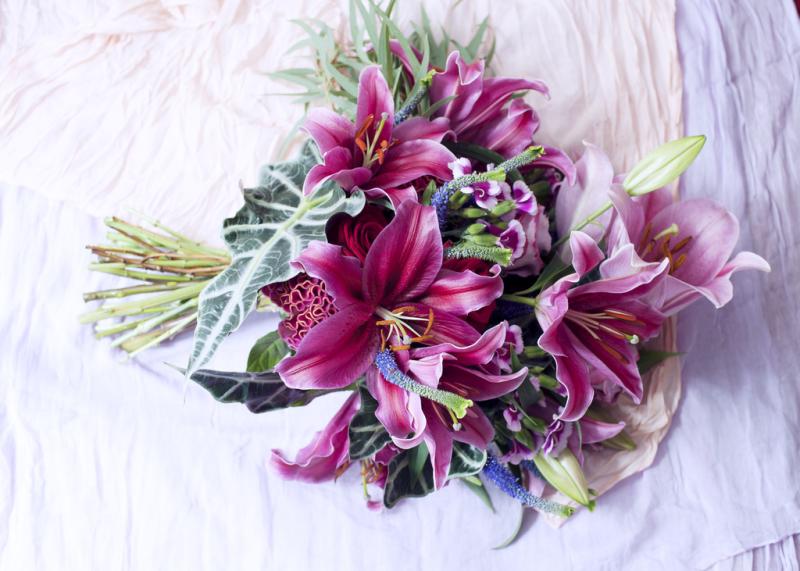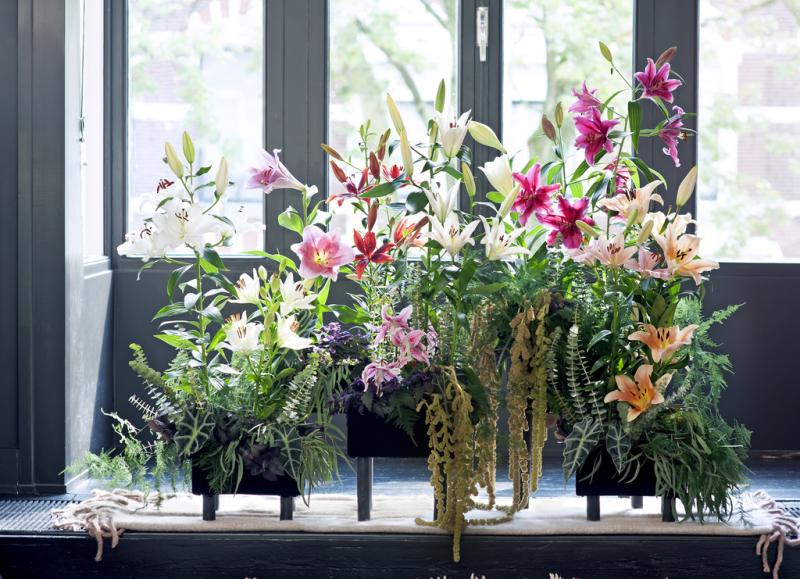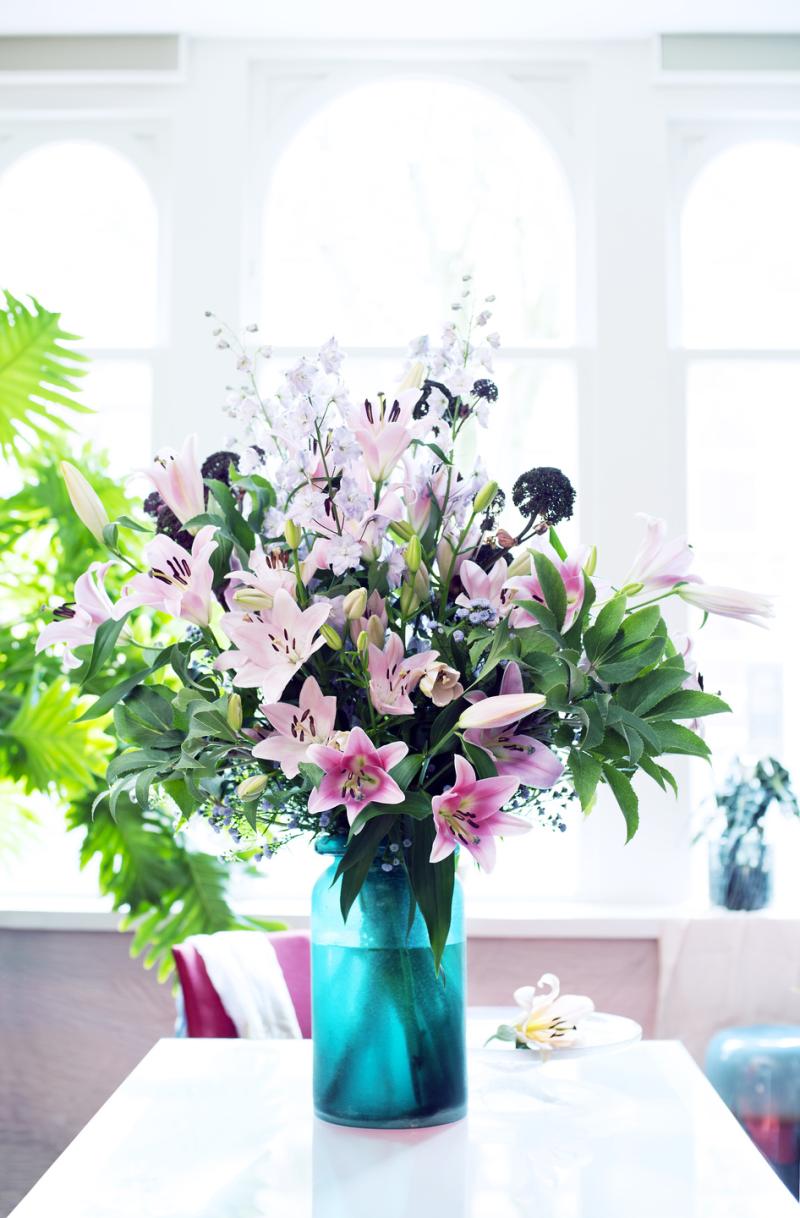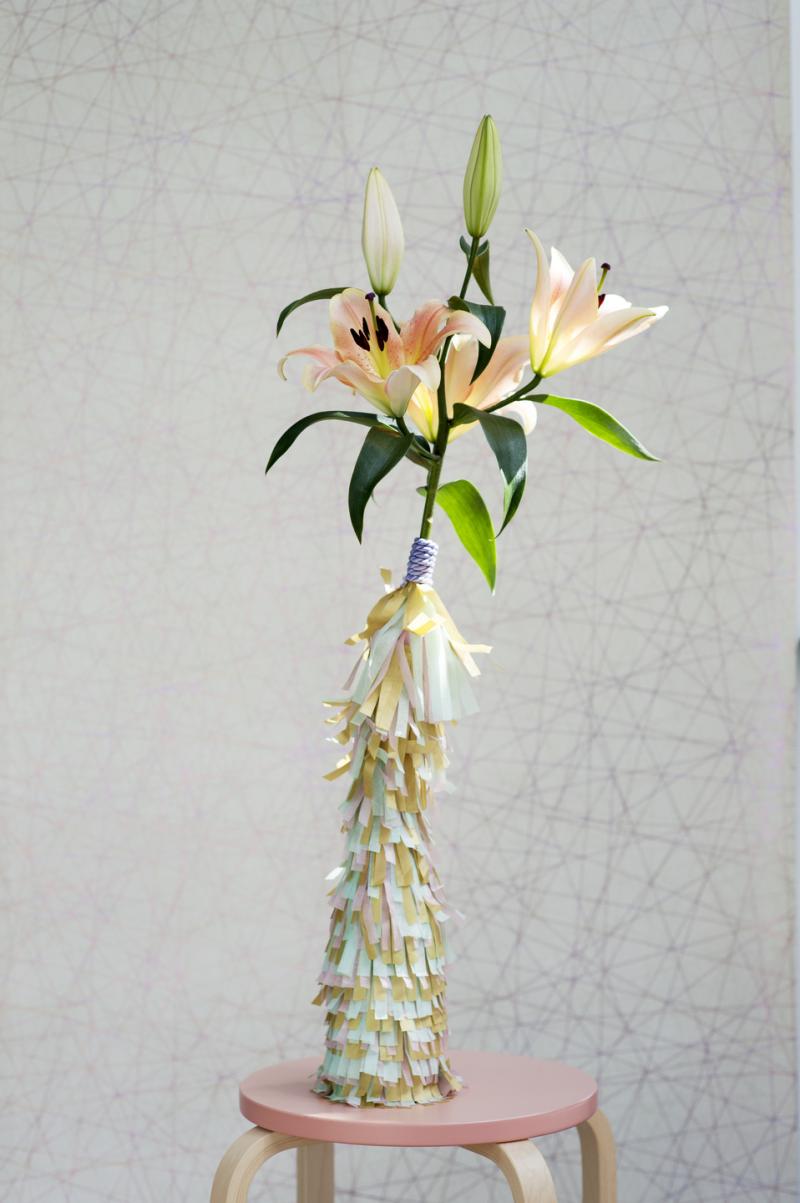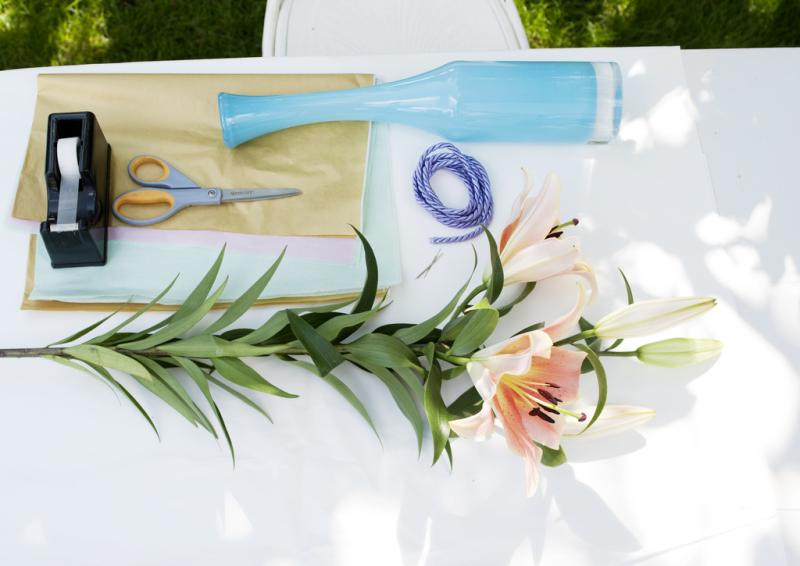The lily: in the Flower Agenda from weeks 23 - 26
We end the first half of the year with the stylish lily, so that we can enjoy spring for a little longer. Consumers can read all about this versatile flower in the Flower Agenda at Funnyhowflowersdothat.co.uk. This includes information about colours, shapes and sizes. Show your customers the lily’s remarkable qualities over the coming weeks.
Origin of the lily
Lilies are not only varied in terms of colour, shape and size, but also in where they come from. You can find them growing wild in Korea, Japan and parts of Siberia, but also close to the equator in India. In Europe the lily is native to the Caucasus, the Balkans, Greece, Poland, the Alps and Pyrenees. It also grows wild in most American states, with the exception of the south-west part of the United States. The lily truly is a world traveller!
The lily’s colours and shapes
The stems with multiple flowers create an eye-catching display in various colours, shapes and sizes. From serene white and calm pink to eye-catching red, yellow, purple and orange and with stripes, fringes or spots. There are single and double flowered lilies, and even varieties without pollen. The flowers can have a diameter ranging from 7 to 25 centimetres. Some also have very stretched calyxes.
Care tips for customers
Give your customers the following tips in order to ensure they fully enjoy their lilies.
• Select a clean vase and fill it with tap water at room temperature.
• Add cut flower food to the water for a longer vase life.
• Cut or trim the stems diagonally by 3 to 5 cm with a sharp and clean knife or secateurs.
• Make sure there are no leaves hanging in the water.
• Do not place lilies in a draught, in full sun or near central heating.
• Regular top the vase up with tap water.
• Take account of lilies’ sometimes strong scent.
• Don’t place lilies near a fruit bowl. Fruit emits ethylene gas which will cause the flowers to age more rapidly.
• Any pollen stains can be removed by carefully lifting them with a piece of sellotape. Don’t rub them - that will cause nasty stains.
How to make a lily bouquet
The stylish lily makes a bouquet extravagant. Combine it with delphiniums, Helleborus leaves, a blue aster and Angelica gigas to create a gorgeous contrast between the dark colours and soft pink lilies. Place the bouquet in a brightly coloured vase to create an impressive display for the customer.
Lily symbolism
Lilies really are packed with symbolism. The most important symbolic meanings are:
• Femininity. In Greek and Roman times brides were given a crown of lilies in the hope of a pure and fruitful life.
• Love. In Victorian days receiving a sweet-scented lily told you: this is my beloved.
• Purity. White lilies are often used at weddings as a symbol of virginity and purity.
• Transience. The serene and pure appearance of the lily expresses emotions at times of loss and mourning.
Inspiration and information
Inspiring images of every flower in the Flower Agenda have been produced in line with the Horticulture Sector Trends 2016 (Groenbranche Trends 2016). These trends are a translation of the latest consumer trends and are specifically aimed at the horticulture sector for use both indoors and outdoors.
If you would like to find out more about the Flower Agenda click here.

